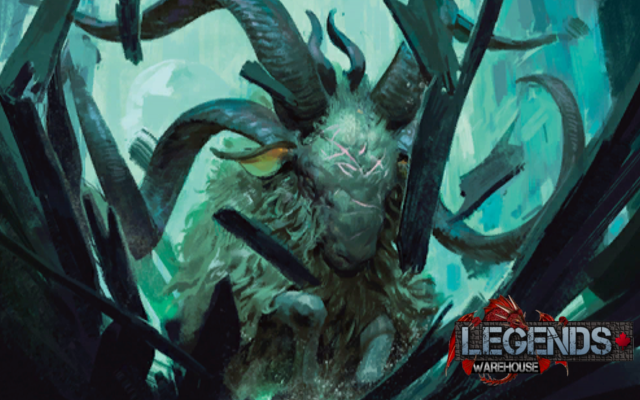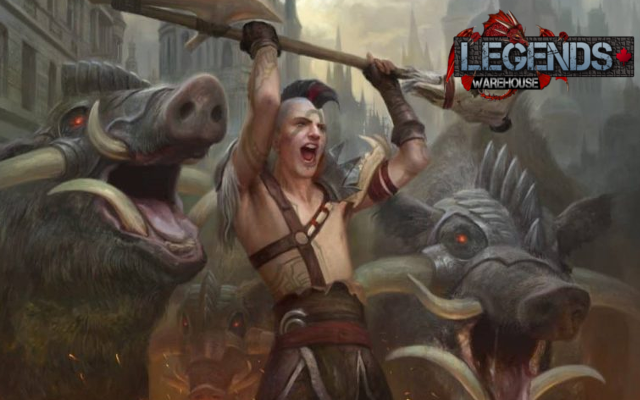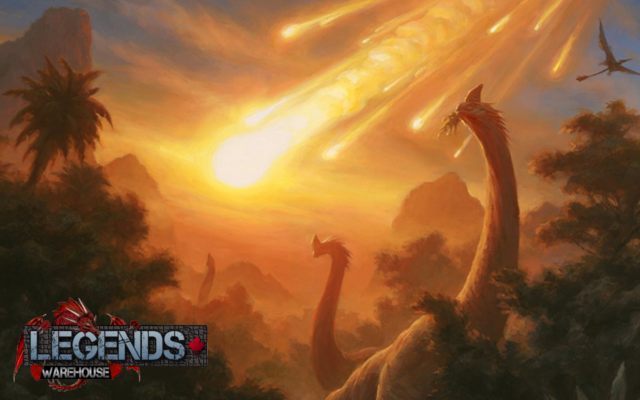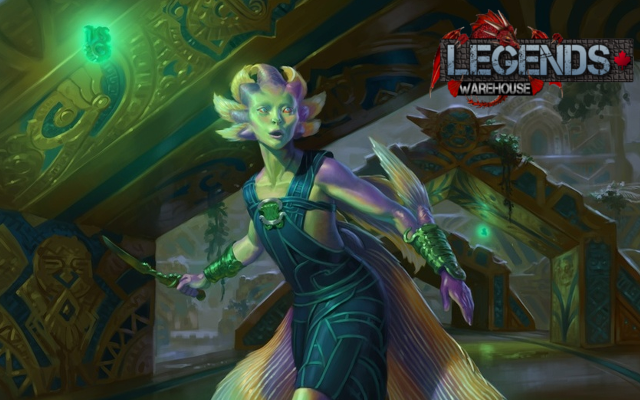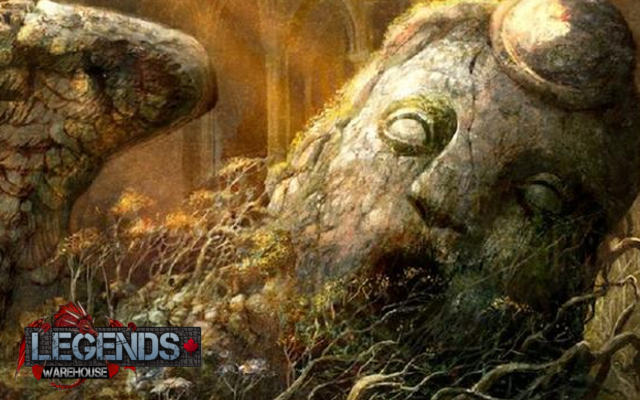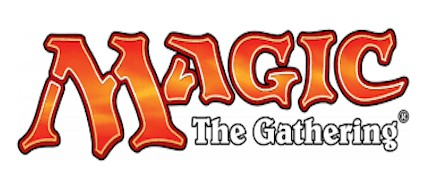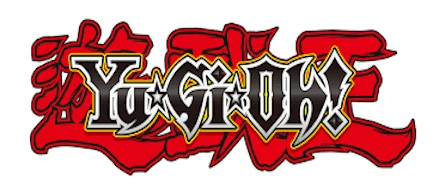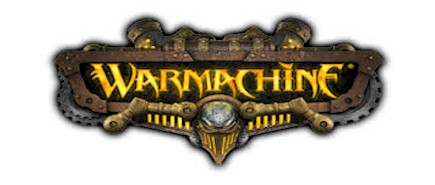The Gift That Keeps On Giving
- Legends Warehouse News
- 16 Aug, 2017
Buying into Standard right now is tricky. We’re halfway through the Hour of Devastation season, and with rotation on the horizon with Ixilan we’re about to see a considerable amount of the format disappear. Couple that with the high cost of staple mythics like Chandra, Torch of Defiance and Hazoret the Fervent and it’s difficult to justify building something new from scratch. But what if I told you there’s a deck that survives rotation, can beat Standard staples like Monument and UR Control, and won’t break the bank?
- 4 Archfiend of Ifnir

- 4 Champion of Wits
- 4 Curator of Mysteries
- 4 Vile Manifestation
- 4 Lurching Rotbeast
- 4 Striped Riverwinder
- 4 Horror of the Broken Lands
- 3 Gifted Aetherborn
- 2 Nimble Obstructionist
- 3 Gate to the Afterlife
- 2 God-Pharaoh’s Gift
- 2 Yahenni’s Expertise
- 4 Choked Estuary
- 4 Fetid Pools
- 2 Sunken Hollow
- 1 Ipnu Rivulet

- 6 Swamp
- 3 Island
- 4 Negate
- 3 Drake Haven
- 1 Yahenni’s Expertise
- 3 Grasp of Darkness
- 3 Consign // Oblivion
- 1 Nimble Obstructionist
God-Pharaoh’s Gift decks are a fairly recent invention that have been popping up fairly often on Magic Online, and even had a decent turnout at Pro Tour Hour of Devastation. However, these decks are traditionally Blue and White and tend to focus on more of a reanimation game plan with Refurbish to cheat God-Pharaoh’s Gift into play. With this build, God-Pharaoh’s Gift is the centre of the entire deck, and it wins by bringing back Angel of Invention as a 6/6 flier with lifelink, vigilance, and haste. However, if you can disrupt this plan, the rest of the deck doesn’t really do anything.
With the Blue/Black build, God-Pharaoh’s Gift isn’t the first line of attack but more of a constantly churning value engine that overwhelms the opposition. Unlike UW Gift, all of our creatures have fairly sizeable bodies on their and can actually finish off an opponent quickly if left unchecked. Vile Manifestation is a powerful little creature from Hour of Devastation that gets out of hand incredibly quickly. I often joke that this is like a faster Tarmogoyf because of just how much damage it can swing for. With a whopping 30 cycling cards, Vile Manifestation can often attack for four damage as early as turn 3, and having four toughness means that it can survive most clashes with opposing creatures. What makes Vile Manifestation truly scary in this deck is that its ability still happens when you Eternalize it with God-Pharaoh’s Gift. This means that on top of the already staggering amount of damage it would attack for normally, you get an additional four damage since it now technically has base 4/4 stats with this ability.
constantly churning value engine that overwhelms the opposition. Unlike UW Gift, all of our creatures have fairly sizeable bodies on their and can actually finish off an opponent quickly if left unchecked. Vile Manifestation is a powerful little creature from Hour of Devastation that gets out of hand incredibly quickly. I often joke that this is like a faster Tarmogoyf because of just how much damage it can swing for. With a whopping 30 cycling cards, Vile Manifestation can often attack for four damage as early as turn 3, and having four toughness means that it can survive most clashes with opposing creatures. What makes Vile Manifestation truly scary in this deck is that its ability still happens when you Eternalize it with God-Pharaoh’s Gift. This means that on top of the already staggering amount of damage it would attack for normally, you get an additional four damage since it now technically has base 4/4 stats with this ability.
Horror of the Broken Lands also fulfills a similar role since it gets +2/+1 whenever you cycle or discard a card. This is a card that has taken Modern Living End by storm and with good reason. I’ve seen this creature hit for upwards of 14 damage in a single attack. However, because it does still cost five mana, Horror of the Broken Lands is cheated into play with God-Pharaoh’s Gift the vast majority of games. Finally, Curator of Mysteries fills out the beatstick brigade by being an evasive threat that also helps filter our draws. With Curator in play, any time we cycle we can scry 1 before we draw, which allows us to ship lands to the bottom of our deck and keep drawing into more cyclers. This helps enable those turns where we pump up the Horror over and over to get those game-ending swings.
The second line of attack comes in the form of Archfiend of Ifnir. This is our ace in the hole against aggressive decks that can go around Vile Manifestation, such as Zombies or UW Monument. Every cycler in your hand turns Archfiend of Ifnir into a one-sided, instant-speed Black Sun’s Zenith that can easily keep the opponent’s board clear of any semblance of a threat. With the sheer amount of cyclers in the deck, it’s a simple task to clear away creatures as big as Crested Sunmare in a single turn by chaining one cycling creature into another. Champion of Wits also helps this plan tremendously because Archfiend of Ifnir triggers off of regular discarding as well as cycling, so looting off of the Champion’s “enters the battlefield” ability will put two -1/-1 counters on your opponent’s creatures.
The third avenue attack is obviously the grinding God-Pharaoh’s Gift reanimation plan. Getting a 4/4 with haste for free every turn is perfect for closing out back and forth games, and since we can continuously pitch creatures to our graveyard we very rarely run out for fuel for the Gift. With 16 one-mana cyclers in the deck, we can potentially get the necessary six creatures in our graveyard to activate Gate to the Afterlife as early as turn 3. As well, our 30 cyclers make it much easier to actually draw into Gate to the Afterlife than with the UW build, which typically only has Champion of Wits and the odd Clue token for card draw. Once Gift is in play we can wear out slower decks with a steady stream of reanimated creatures. As well, since we get the 4/4 tokens for free, this lets us keep up mana on our turn to trigger and Horror of the Broken Lands or Archfiend of Ifnir we bring back.
with the UW build, which typically only has Champion of Wits and the odd Clue token for card draw. Once Gift is in play we can wear out slower decks with a steady stream of reanimated creatures. As well, since we get the 4/4 tokens for free, this lets us keep up mana on our turn to trigger and Horror of the Broken Lands or Archfiend of Ifnir we bring back.
One other notable inclusion is a pair of Nimble Obstructionist in the maindeck. Stifle effects aren’t something you see in Standard too often, with Disallow being one of the only examples since Trickbind all the way back in Time Spiral. Being able to counter anything from a planeswalker ability to a Gearhulk trigger gives the deck incredible reach against a lot of grinding decks, and the fact that it draws you a card while boosting so many of our other creatures gives it an edge over Disallow in my book. While we lose out on the whole “actually countering spells on the stack” thing Disallow does, there really aren’t too many spells that we’re scared of barring something crazy like the odd Torment of Hailfire for eight. On top of all that, we can always just cast it on our opponent’s end step and use it as a beatstick when it’s time to push in damage. It doesn’t come up too often since the cycling side is so flexible, but it helps in case we need to pick off a planeswalker.
Finally, we have Yahenni’s Expertise, which may seem odd in a deck with small bodies like Gifted Aetherborn and Champion of Wits, but it’s basically the best sweeper Black has access to. It also has the advantage of clearing away a board of small creatures and then letting us cast Vile Manifestation and Gate to the Afterlife for free. I initially included this as a concession to the prevalence of Zombies, but the sheer tempo swing this card can create is nothing to scoff at. The vast majority of our creatures survive the -3/-3, and you  can even use the loss of toughness to help finish off larger creatures with Archfiend of Infir. It’s been a surprisingly flexible card despite the aggressive nature of some of our other cards.
can even use the loss of toughness to help finish off larger creatures with Archfiend of Infir. It’s been a surprisingly flexible card despite the aggressive nature of some of our other cards.
Since the maindeck is so powerful against midrange decks, the sideboard is geared toward fighting aggro and control. A full set of Negate and three copies of Drake Haven are there for beating control since it’s much harder to win through the aggro plan. Sticking a Drake Haven gives us a constant supply of 2/2 Drake tokens that can chump block Torrential Gearhulk long enough to swarm around it for the counterattack. Even if it means cycling one fewer card on their end step, the advantage of getting these bodies to chip away at the opponent is crucial.
We also include Nimble Obstructionist in these matchups, and for White control decks we also bring in Consign // Oblivion. Having additional copies of Nimble Obstructionist increases our interaction against Torrential Gearhulk and planeswalkers, but also has the ability to counter Scavenger Grounds and Crook of Condemnation activations that would otherwise exile our graveyard. Consign is mostly used to bounce any Cast Out or Stasis Snare that would exile our threats. While Nimble Obstructionist can also stop these by countering their trigger, Consign lets us bounce Cast Outs that have already resolved.
The sideboard is definitely flexible, and there were several cards I considered for inclusion before deciding these were the best for the local metagame. For example, Scarab Feast is a fantastic option for handling opposing God-Pharaoh’s Gift decks since you can exile cards out of the opponent’s graveyard before they get a chance to Eternalize them, or even exile their artifacts in response to a Refurbish. Flaying Tendrils, on the other hand, is more for Ramunap Red and BW Zombies since they have, on average, smaller creatures that can return from the graveyard. Exiling creatures like Scrapheap Scrounger and Earthshaker Khenra can save you plenty of headaches in the long run, but I wouldn’t recommend it against Mono-Black Zombies due to their abundance of anthem effects. Finally, for decks that rely on a singular card, Lost Legacy is the perfect card for shutting an opponent off of their win condition. Cutting a deck like Ramp off of Ulamog, the Ceaseless Hunger, or an Approach of the Second Sun deck off of their namesake card is devastating, and can often win the game on its own, so if your meta is teeming with these strategies this might be the route to victory.
I’ve been incredibly pleased with the success the deck has had against tournament staples like UR Control, UW Monument, and even Zombies. The combined aggressive power of Vile Manifestation, the board control of Archfiend of Ifnir, and the late game value of God-Pharaoh’s Gift culminate into a flexible deck capable of attacking most metagames. On top of being just plain fun, the deck costs less to build from scratch than a pair of Chandra, Torch of Defiance and all of the core pieces survive rotation next month, so it’s a deck that’s built to last. If you’re on the fence about jumping into Standard, God-Pharaoh’s Gift is the way to go!





